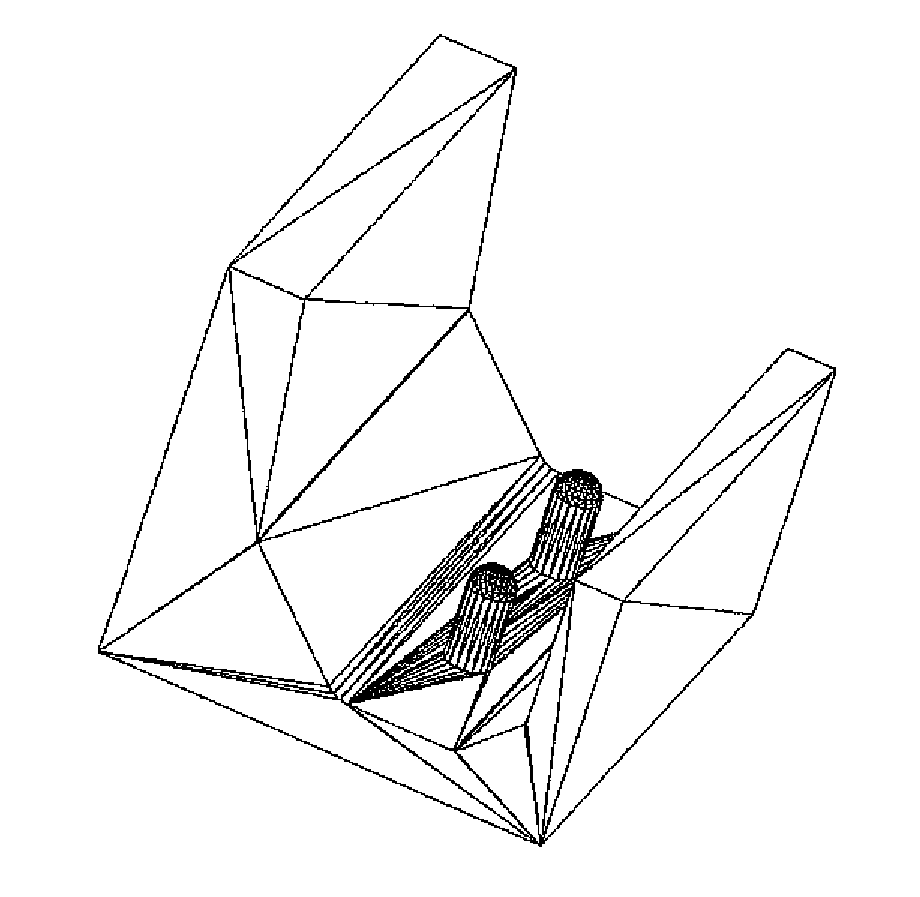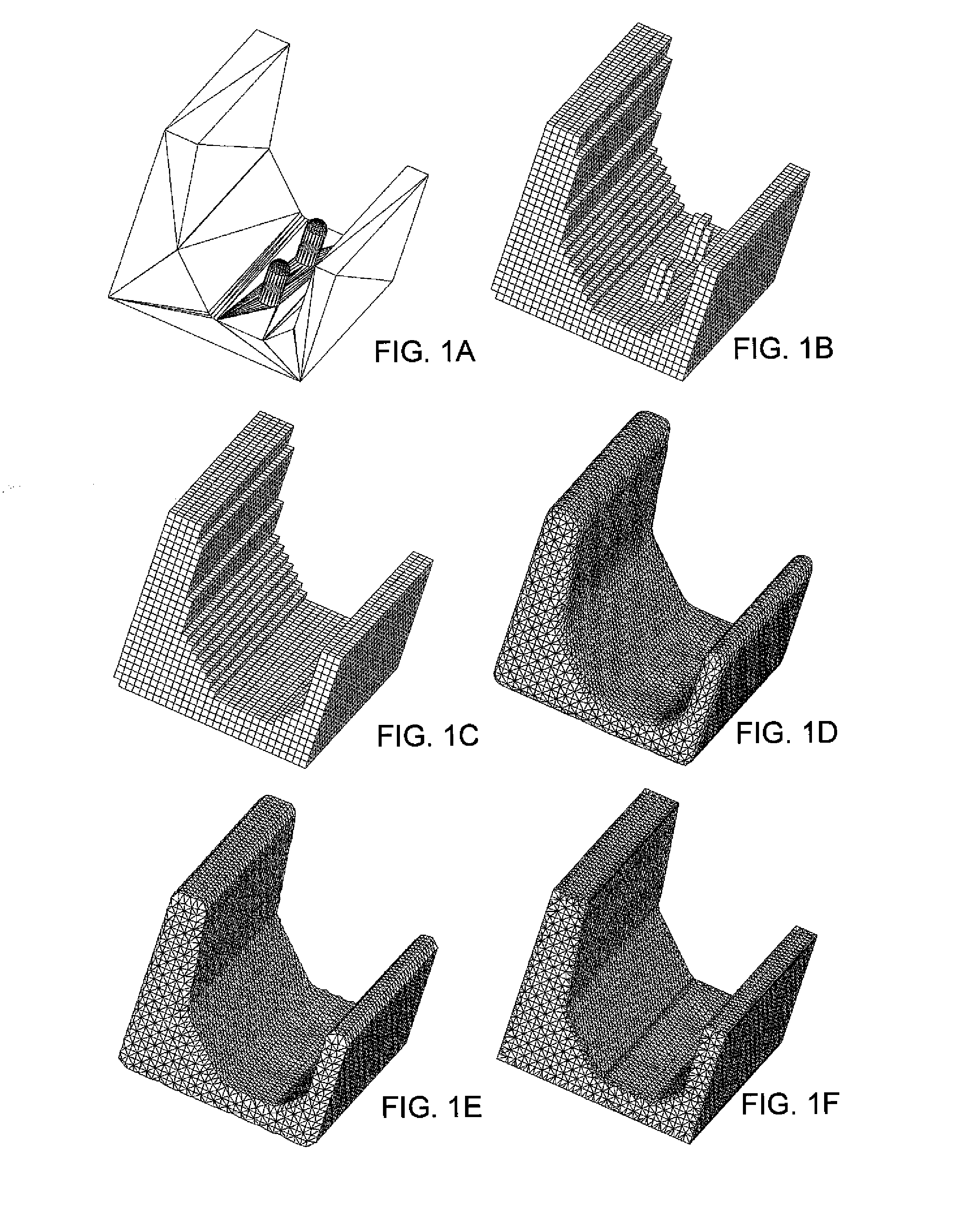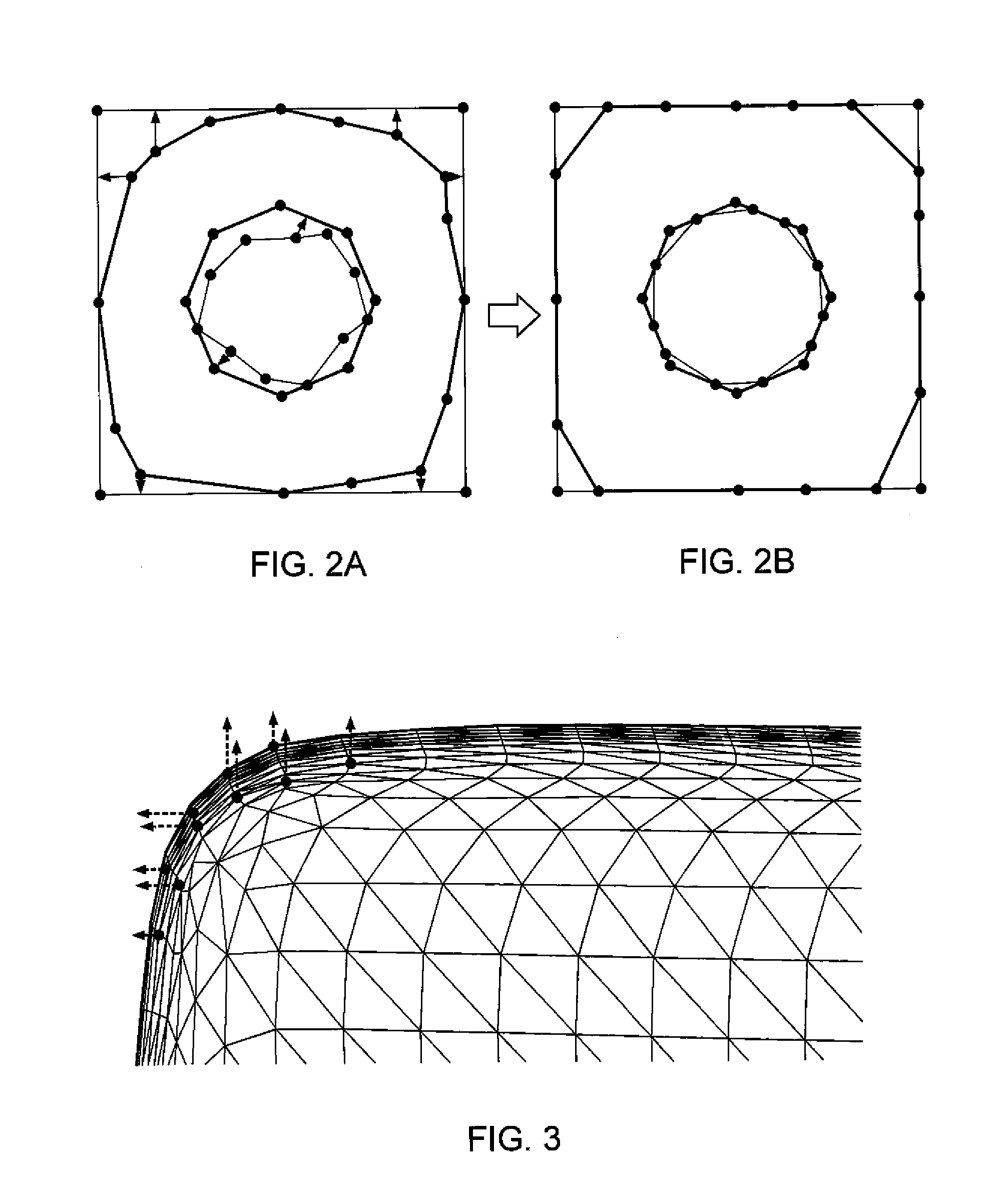Image processing method
a processing method and image technology, applied in the field of computer assisted methods, can solve the problems of invalid geometries, types of subsequent processing, and inability to be manually operated, and achieve the effect of recovering accuracy
- Summary
- Abstract
- Description
- Claims
- Application Information
AI Technical Summary
Benefits of technology
Problems solved by technology
Method used
Image
Examples
Embodiment Construction
[0056]An overview of a method that comprises one an embodiment of the invention is discussed first with reference to FIGS. 1A to 1F. FIG. 1A shows the master boundary representation of a virtual three-dimensional object, also referred to below as the original CAD model. This can be obtained from or created by any conventional CAD software package, and the representation is rendered on a display or other output associated with a computer which includes at least one processor configured by code executing therein to provide the functionality and transformations of data maintained in a non-transitory memory device, as discussed in this specification.
[0057]The code utilized by one or more embodiments of the present invention comprise instructions that control the processor of the computer to execute methods, such as detailed in FIGS. 7 and 8 below. The instructions can comprise a program, a single module, or a plurality of modules that operate in cooperation with one another. More genera...
PUM
| Property | Measurement | Unit |
|---|---|---|
| signed distance | aaaaa | aaaaa |
| volume | aaaaa | aaaaa |
| physical model | aaaaa | aaaaa |
Abstract
Description
Claims
Application Information
 Login to View More
Login to View More - R&D
- Intellectual Property
- Life Sciences
- Materials
- Tech Scout
- Unparalleled Data Quality
- Higher Quality Content
- 60% Fewer Hallucinations
Browse by: Latest US Patents, China's latest patents, Technical Efficacy Thesaurus, Application Domain, Technology Topic, Popular Technical Reports.
© 2025 PatSnap. All rights reserved.Legal|Privacy policy|Modern Slavery Act Transparency Statement|Sitemap|About US| Contact US: help@patsnap.com



